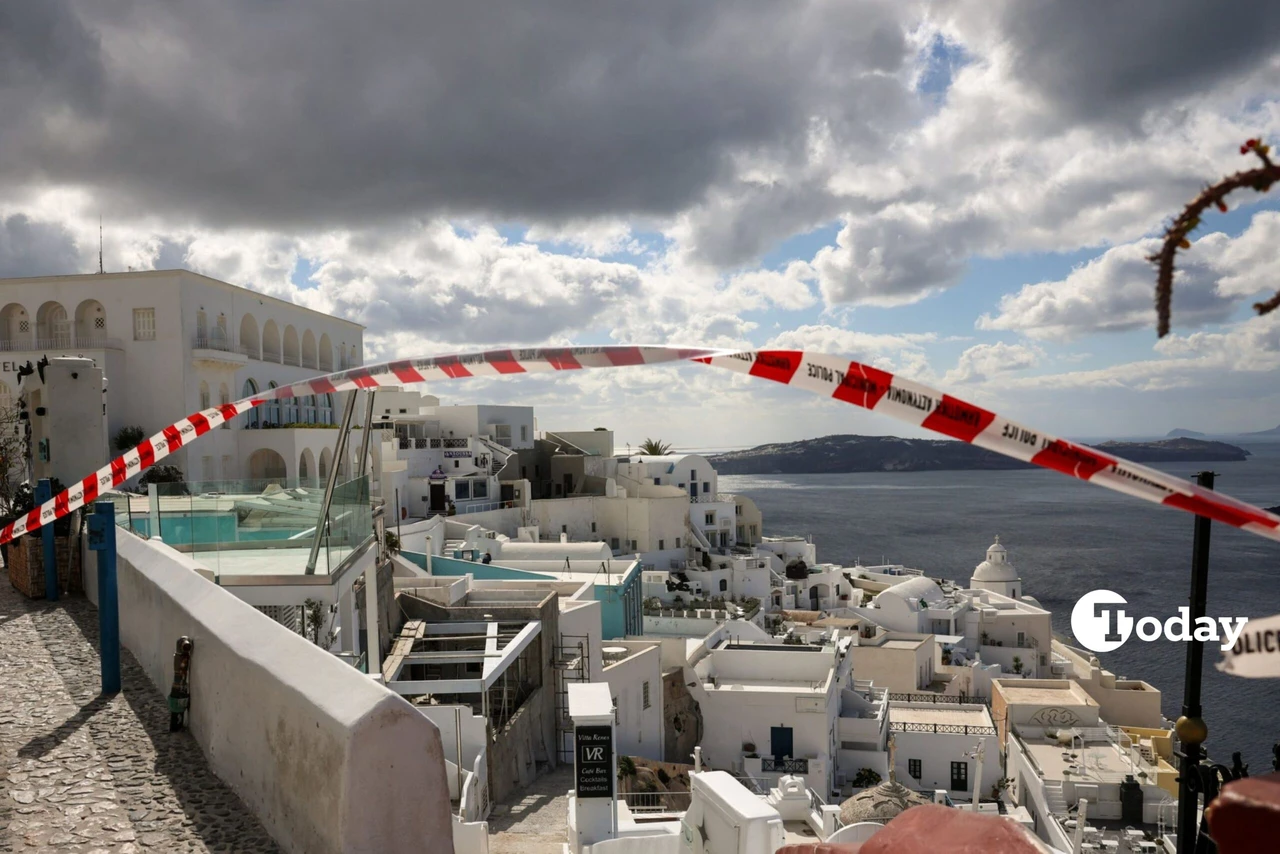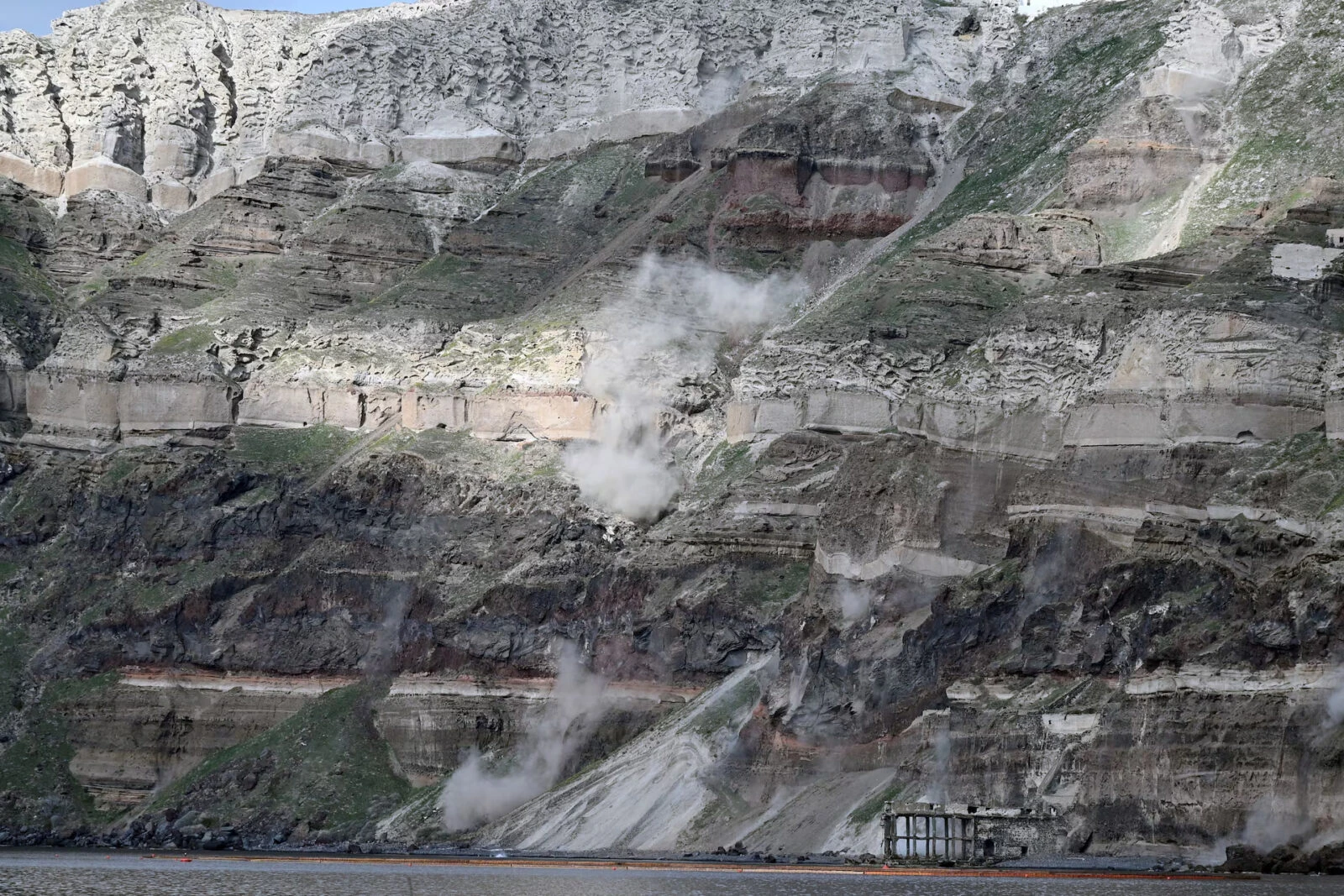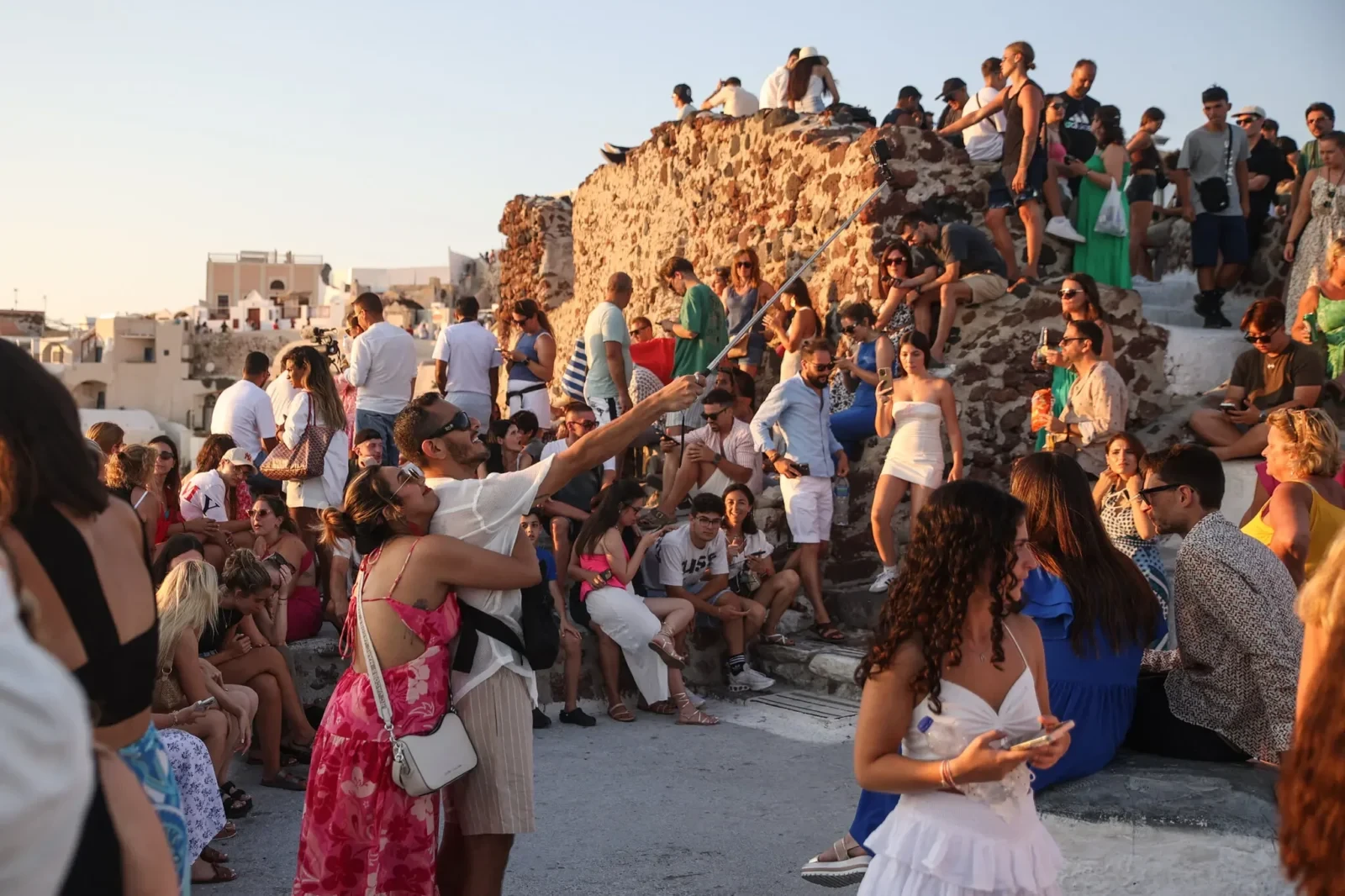Unpredictable seismic activity in Santorini: Schools shut, tourism disrupted
 A closed pathway in the village of Fira as seismic activity intensifies on the island of Santorini, Greece, February 7, 2025. (Photo via la.lv)
A closed pathway in the village of Fira as seismic activity intensifies on the island of Santorini, Greece, February 7, 2025. (Photo via la.lv)
The Greek island of Santorini continues to experience significant seismic activity, with experts warning that tremors could persist for weeks, even months.
The beginning of the tourism season in Santorini has been postponed to May due to recent earthquakes, and schools will remain closed until Feb. 28 as per the decision taken until the next assessment.
Professor Efthymios Lekkas, head of the state-run Earthquake Planning and Protection Organization, has cautioned that the situation remains unpredictable and that the possibility of a strong earthquake cannot be entirely ruled out.
Over 20,000 tremors recorded in Santorini and surroundings
In an interview with public broadcaster ERTNews, Professor Lekkas revealed that the number of tremors recorded in the area has already exceeded 20,000. He emphasized that while the likelihood of a magnitude 6.0 earthquake has decreased, the risk remains present.
“Risk is never zero anywhere in Greece,” he warned, stressing the need for continuous monitoring and preparedness.

Greek authorities deploy experts to monitor landslides
Given the island’s unique geological structure and steep cliffs, authorities are closely monitoring potential landslide risks, which could be exacerbated by ongoing seismic activity.
A team of geologists from the National and Kapodistrian University of Athens (EKPA), led by Professor Manolis Vasilakis, has been deployed to assess the stability of landslide-prone areas.
Drones and advanced sensors used to assess terrain stability
Utilizing cutting-edge remote sensing technology, including drones and LiDAR sensors, the team is mapping high-risk locations such as Athinios Bay, the Old Port, Ammoudi, Armeni, and Korfos on Thirasia. These devices collect millions of data points to analyze changes in terrain and identify areas at heightened risk.
Professor Vasilakis highlighted that the use of UAVs equipped with high-resolution cameras is crucial in detecting early warning signs of geological shifts. “This technology allows us to continuously monitor surface movements and predict possible landslide incidents triggered by seismic events or extreme weather conditions,” he explained.

Popular tourist areas under close surveillance
Some of Santorini’s most visited areas are among the most vulnerable to landslides. The Old Port, a major tourist attraction, has already witnessed rockfalls and sediment accumulation along its cable car route. Authorities are now working on plans to reinforce and stabilize these areas to prevent further damage.
Athinios Port, the island’s primary ferry terminal, has also seen recent landslides. Although these events have not directly impacted major roads or human activity, experts are keeping a close watch to ensure safety measures are in place.
Satellite data to support long-term risk assessment
In addition to drone technology, researchers are utilizing satellite data from Greece’s micro-satellites to monitor surface changes on Thira and Thirasia islands over time. These observations will help scientists track temperature variations and geological shifts, offering valuable insights into long-term risks.
If necessary, further monitoring devices, such as radar systems and ground-based detection units, may be installed on the volcanic island of Kameni and the cliffs opposite Fira and Oia to enhance predictive capabilities.
Expert advice: Staying vigilant amid ongoing seismic activity
Professor Vasilakis underscored that while landslides are a natural occurrence in Santorini due to its rugged landscape, human intervention can play a crucial role in mitigating risks.
The research team’s findings will be shared with local authorities to aid in decision-making and ensure the safety of residents and tourists.

Schools in Santorini, Ios, Anafi, and Amorgos closed until Feb. 28
Schools in Santorini, Ios, Anafi, and Amorgos will remain closed until Feb. 28, due to ongoing seismic activity in the area. This decision was made following a joint meeting of two scientific committees—the Earthquake Risk Assessment and Mitigation Committee and the Volcanic Arc Monitoring Committee of OASP—on Feb. 22.
The seismic activity in the sea area between Santorini and Amorgos has decreased, with 1,368 earthquakes recorded since Feb. 1, including one with a magnitude of 5.3. The activity is attributed to underwater faults and a combination of tectonic and volcanic forces. There has also been a decrease in the rate of land deformation in the broader Santorini area, which is being closely monitored.
Precautionary measures include avoiding large gatherings indoors, staying away from abandoned buildings, and refraining from accessing certain ports and coastal areas. The situation will be reassessed during the next committee meeting on Feb. 27.
With no immediate end to the tremors in sight, Santorini remains under close observation. As seismic activity continues in the region, officials are urging the public to stay informed and adhere to safety advisories.



